The BRAWL² Tournament Challenge has been announced!
It starts May 12, and ends Oct 17. Let's see what you got!
https://polycount.com/discussion/237047/the-brawl²-tournament
It starts May 12, and ends Oct 17. Let's see what you got!
https://polycount.com/discussion/237047/the-brawl²-tournament
Best Of
Re: Tech Artist - What are you working on: FOREVER Edition!
Because I'm a masochist and I like to LARP as a graphics programmer I decided to make trees
This is a (very) naive implementation of the tree generation algorithm described in this paper
https://algorithmicbotany.org/papers/colonization.egwnp2007.large.pdf
it's done in python/opengl because I'm far too lazy and stupid to write it in C




TLDR for those that don't want to read the paper:
you define a volume for the canopy, fill it with points, grow branches from the trunk towards the points.
The major benefit vs the more conventional 'start with a trunk and grow branches from it' approach is that you are able to explicitly define a canopy shape - rather than just accepting what you're given
This isn't where I'm actually heading with this project - i have a similar but different approach in mind but I needed a known good reference
This is a (very) naive implementation of the tree generation algorithm described in this paper
https://algorithmicbotany.org/papers/colonization.egwnp2007.large.pdf
it's done in python/opengl because I'm far too lazy and stupid to write it in C




TLDR for those that don't want to read the paper:
you define a volume for the canopy, fill it with points, grow branches from the trunk towards the points.
The major benefit vs the more conventional 'start with a trunk and grow branches from it' approach is that you are able to explicitly define a canopy shape - rather than just accepting what you're given
This isn't where I'm actually heading with this project - i have a similar but different approach in mind but I needed a known good reference
2 ·
Re: Apple mini M4pro vs laptop with rtx4080?
gnoop said:I can't find how Designer or Painter do there. My last mac experience was i5 mini without dedicated video-card . Had been just a toy really . Never had issues with Blender although.
Well, Blender was a good deal less stable for me and also rendered the eevee viewport differently. You could test that out with the demo scenes they publish.
Other programs that behaved different or worse on Mac that I came across:
- ZBrush: some functionality missing, somewhat less stable, ZScript wasn't fully compatible between Win and Mac versions
- Marvelous Designer: no GPU hardware acceleration for cloth compute back when Intel Macs came with AMD cards. I imagine it's not gotten better with the switch to M series
- Mudbox: if I had a nickel for every crash I experienced...
- Maya: Some viewport features missing. Didn't use it much otherwise so hard to say how complete or not it is
- Mari: Interface display niggles. Development was shut down a while back and the Mac port had been lagging well before that. This was a program that was demonstrated on/advertised for Mac even.
Bottom line: don't expect too much from ports to the niche platform. Mac is lovely to use but only makes sense if you primarily use software that is being developed on it. Else you get the bastard ports.
 thomasp
thomasp
1 ·
Re: Sketchbook: David Cruz
Its an inspired combination of Cipher from : Gravity falls , but made in a really "unique" way i suppose. and Orbb from Q3A
Ah right, my first association was a mix of Unreals Gas Bag and Half Life 2s Dog :-B
Interesting/ terrifying creature, that last one (a bit hard to read with it and background being dark). Keep it up
Interesting/ terrifying creature, that last one (a bit hard to read with it and background being dark). Keep it up
 Fabi_G
Fabi_G
1 ·
Gina (critique welcome)
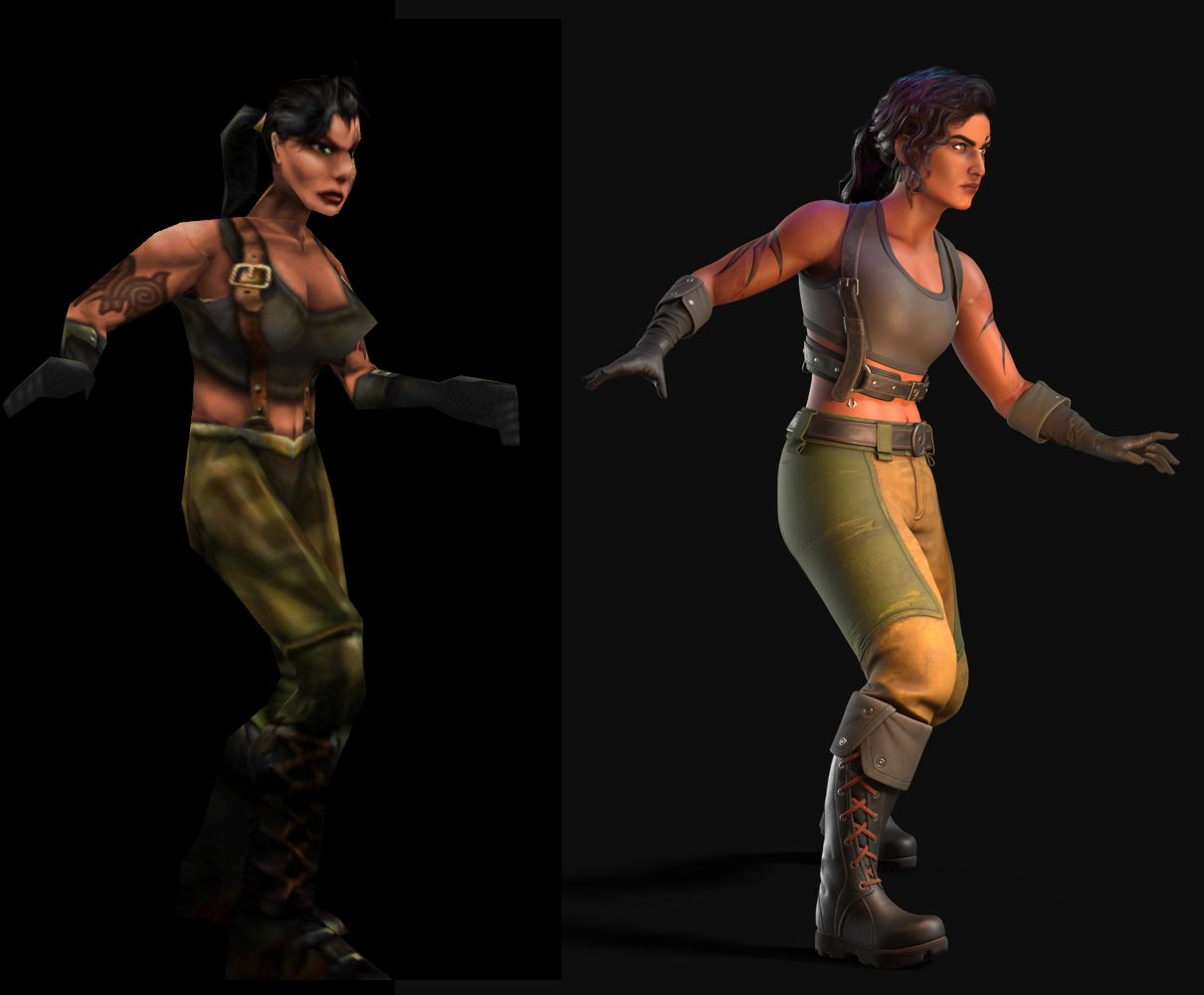
After browsing this section for a while I've come to a conclusion that I'm supposed to start to post only if my project has something substantial to show. But then what if I commit to a grave mistake early on? I do need help with the whole thing after all. Deciding to just go for it, I'm starting this WiP thread, sorry X)
This is a pretty straightforward interpretation of Unreal's default character - Gina.
I'm aiming for something relatively simple in design, down-to-earth materials. I do want to play up some of the original model's... perceived features.
One such feature is a "hooked nose", been dead set on that one for years =D
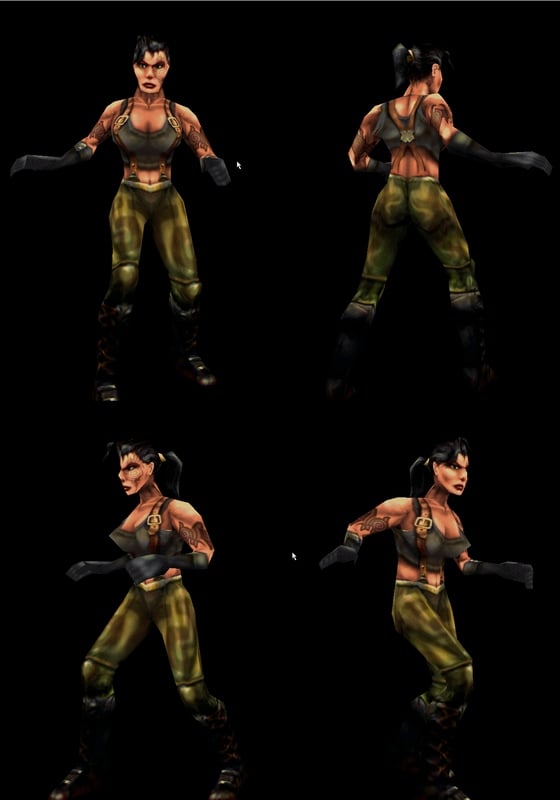
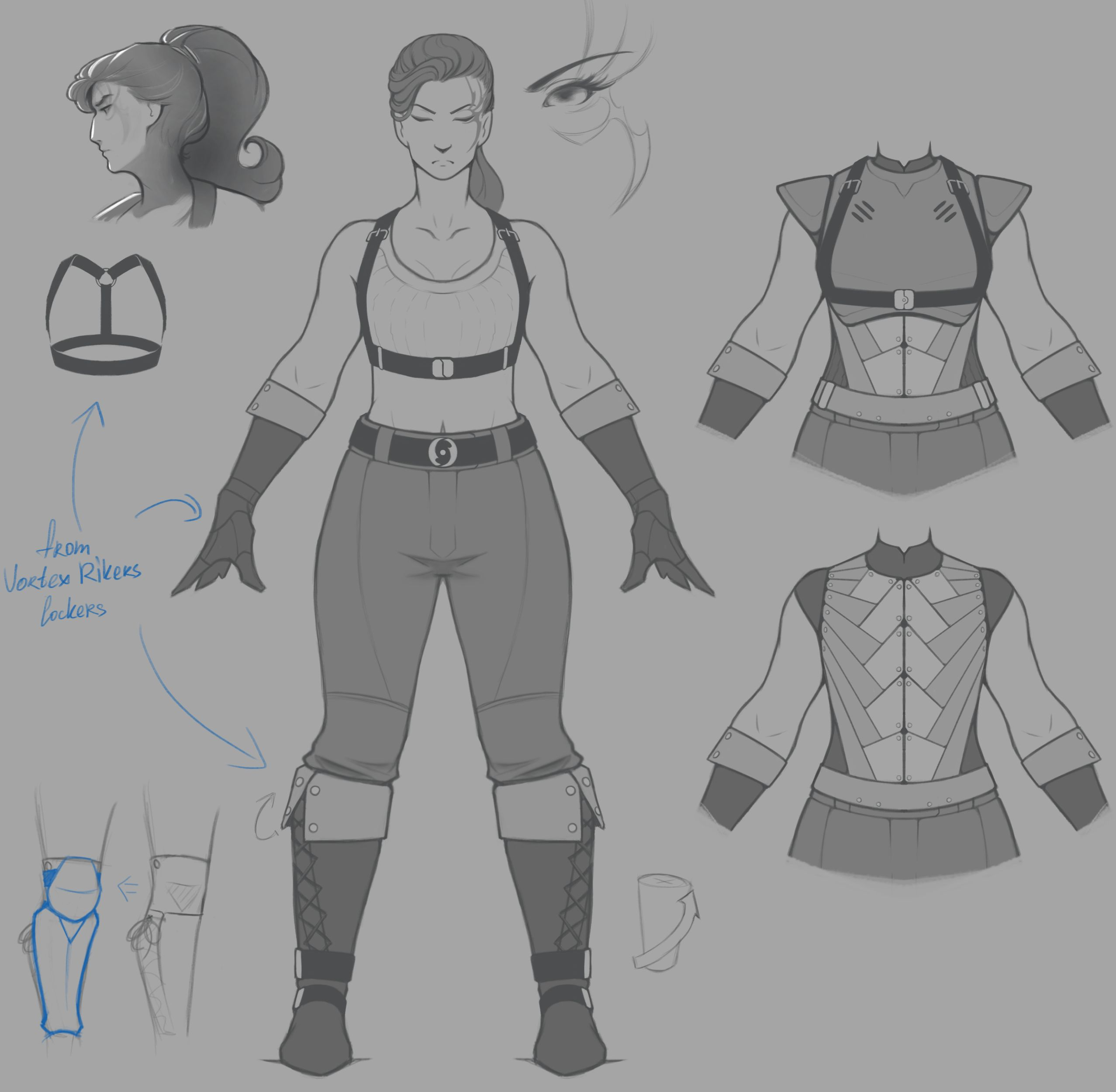
The goal is to push for a more realistic model - something that I don't normally do, as I don't have an eye for realism. I can enjoy it, but how to achieve it?..
Started on the body, it's still easy enough to change things around.
Goal: a somewhat tough-looking lady, but not "super-human super-model" type. Can use just a little more volumes all around I guess? Or not.
Already not sure if proportions are realistic or not. Especially with the arms and hands. Are they tiny?
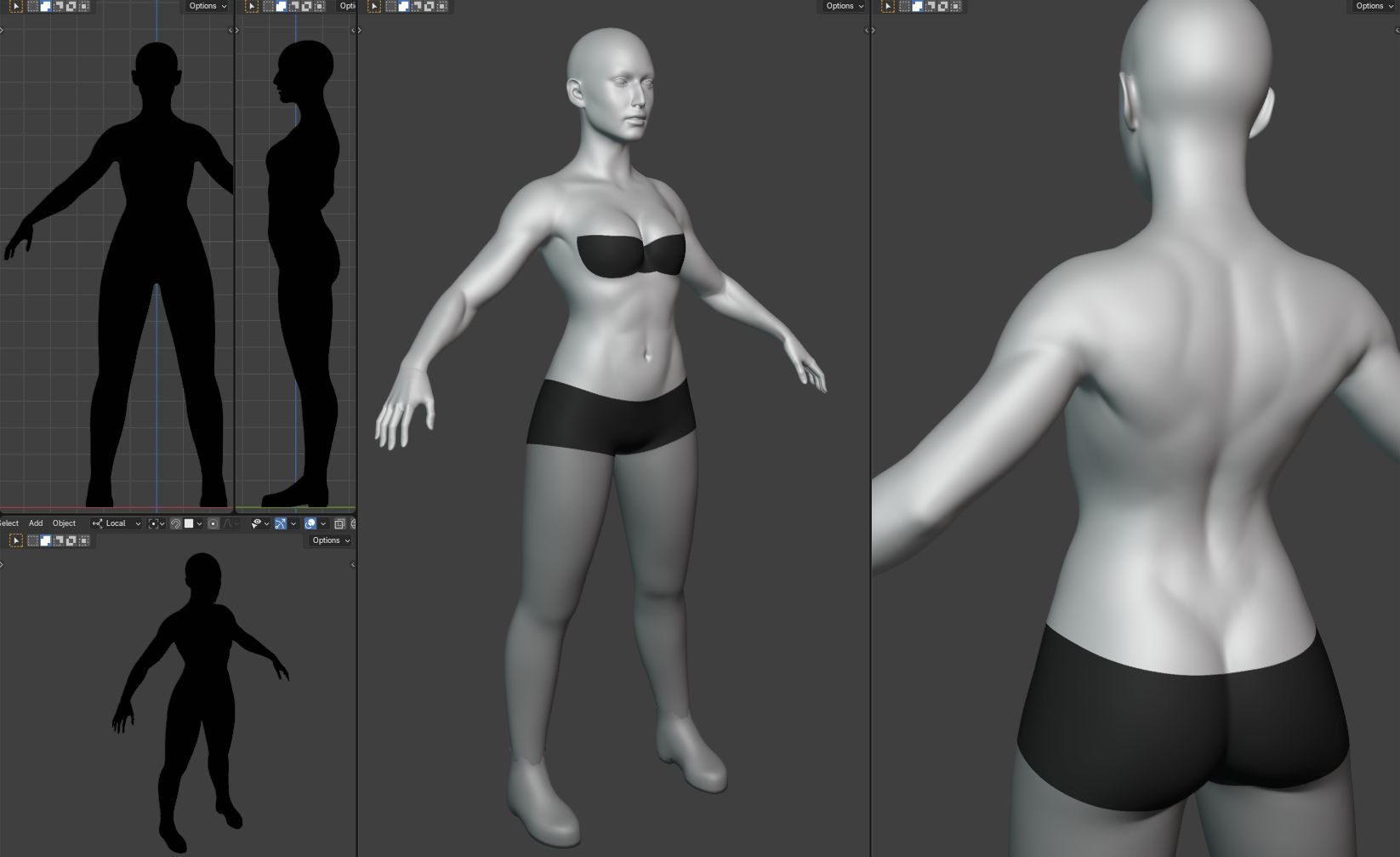
The head so far. Never made a fully realistic one before, so quite a bit lost here.
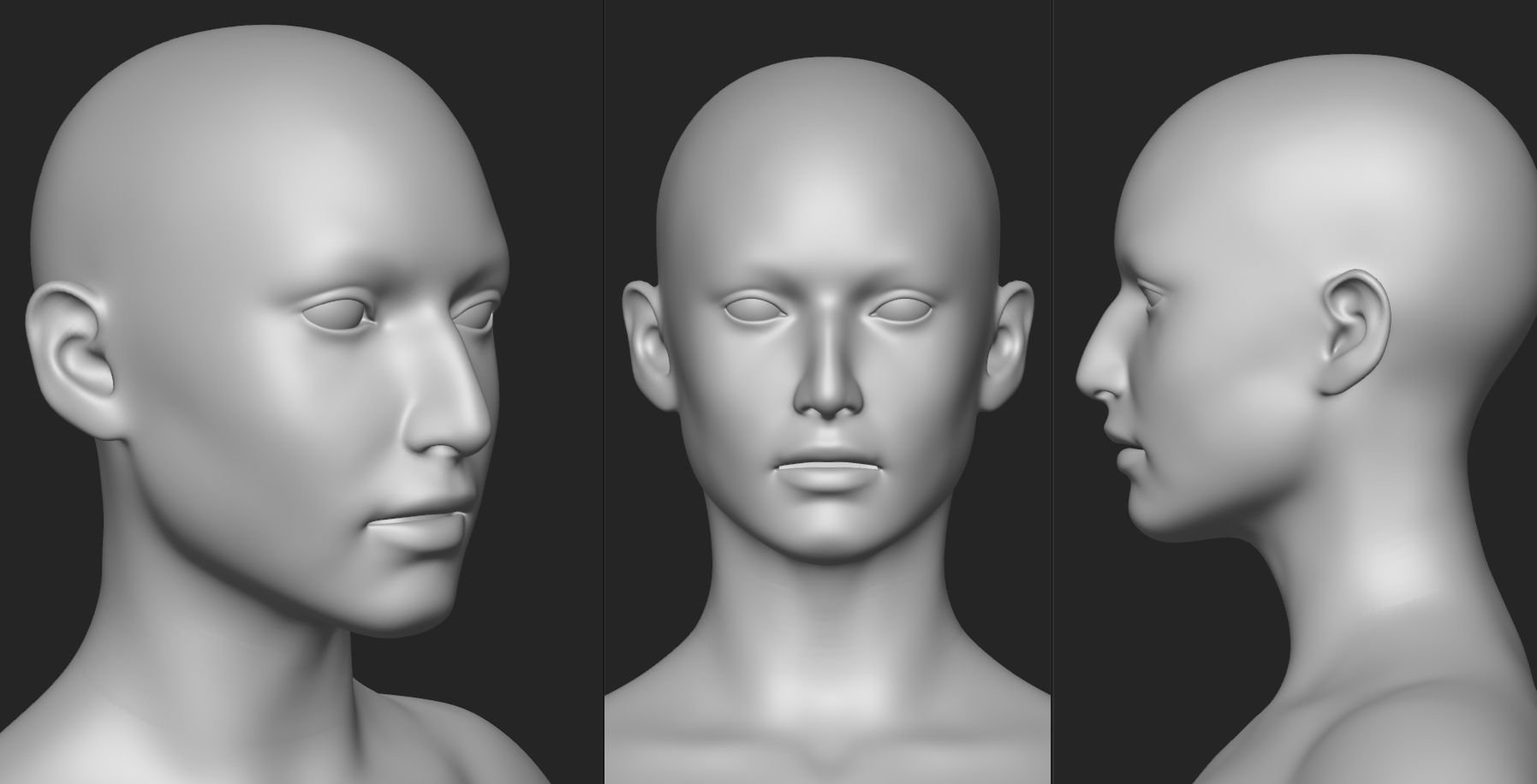
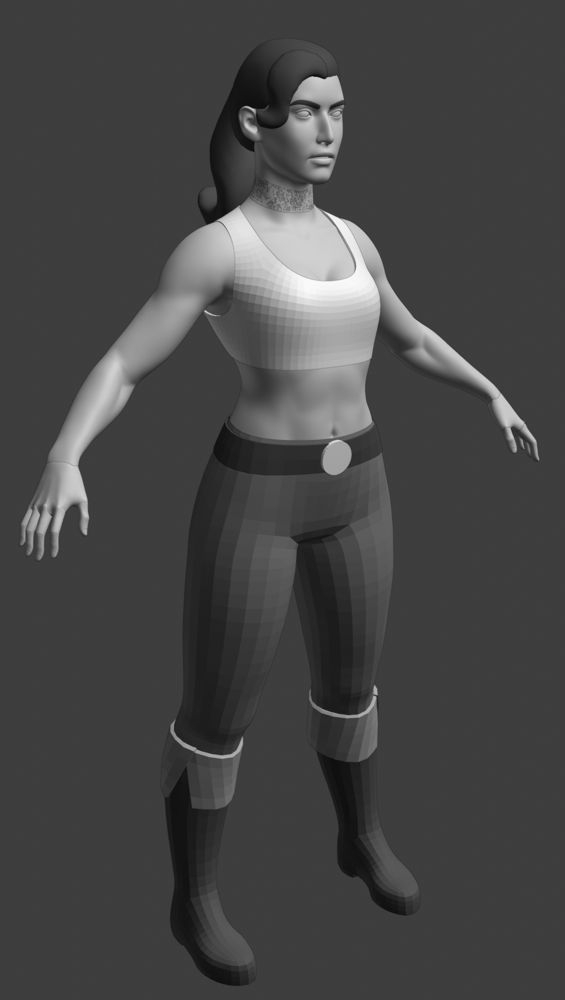
Any help would be most appreciated! Thank you for your time.
 stray
stray
2 ·
Re: What Are You Working On? (3D) 2025
A side project over the holidays inspired by info Ben Bolton had shared here altho I'll use both unique textures with a trim sheet to paint this prop, anyway high is done whilst low poly triangle count will remain at a sub-1k target.

Edit:
Was quite challenging for me too cull detail plus adding bigger bevels without looking overly stylized but nevertheless importantly it's silhouette is as faithful I reckon too 1986 WRC Group B specs
Oh almost forgot spent most time getting the wheels near enough correct, while all other object elements having been smoothed via custom normals excluding these mainly because of their sick tread pattern - really wanted to bake those 
 sacboi
sacboi
7 ·
Re: Sketchbook: Rima






 Some stuff I sculpted for something. Ahh, they're not as good as I want them to be. I wish I had more time. Especially for that vargheist. I also wish my PC wasn't choking; I couldn't Zremesh for some reason, so I was stuck with dynamesh at points it really wasn't that suitable for.
Some stuff I sculpted for something. Ahh, they're not as good as I want them to be. I wish I had more time. Especially for that vargheist. I also wish my PC wasn't choking; I couldn't Zremesh for some reason, so I was stuck with dynamesh at points it really wasn't that suitable for. I've been in a bit of a depression for a while and haven't made any progress on my main project. I've been procrastinating from it due to perfectionism. But after doing these I feel a little bit better; turns out I can sculpt a bit if I just push myself through it, or have a deadline. I'll try getting back to that main project soon.
I also think I had a bit of a breakthrough in my way of thinking about references and sculpting. Since I started thinking more about the planes and ignoring, to an extent, what they really look like, I've found it a lot easier to sculpt. Thinking of them as certain blocks and planes instead of anatomy is surprisingly helpful. It might be obvious to anyone with a brain, but for me, that wasn't something that came easily.
I'm also not as good at hard surface stuff as I'd like. I need to work on that.
2 ·
Re: portfolio critique needed!
kosolapchik said:Ah, I see. Some of the cylinders could be straighter. ThanksFabi_G said:
Some borders seem almost aligned with the pixel raster, but not quite, many others seems more relaxed (didn't mark all islands in question, but hopefully it's clear. I find tube-like/ cylindrical shapes and strips are very fitting for this). Perhaps it comes across as nitpicky,but I think even when work-samples don't have LODs, it doesn't take much time during unwrapping and allows to show a habit of making assets "future-proof".
Here is a cool thread by @Neox on the topic: https://polycount.com/discussion/235489/uv-straightening-and-its-perks-on-lod-generation, with other users chiming with methods for other modeling apps.
This is why I like polycount!
A bit confused about when the undistorted ratio is more preferable over the straighten lines, though!
it depends on the final use really. the higher the texture resolution, the less this matters. if you dont have lods, go wild, make banafingers and curvy shapes.
distortion is a topic, 3d painting and projection solves this to
some extend. But as shown in my thread, squaring for the sake of square
shapes and not looking into how much it distorts, is also not the way
to go. It is always a balance between many factors.
With 3d painting not a lot of this matters anyways. that being said,
painting a straight line in 2d will always be simpler than brushing it
over a 3d curved surface.
say you wanna add stitching to that belt marked here

it can be a 2 click operation, or a lot more complex to solve, and no matter how good the tools become it will stay more complex than 2 clicks in 2d space. it will look less clean and pixelated depending on the final resolution and how close you actually can get. To me personally this is always time well spent, because it is time you save yourself or possibly others down the road in texturing, or lodding, or skinning at times using UVs to select the needed verts is also simpler than doing this in 3d.
Always keep in mind that the current step is likely not the last step, try to keep all steps of the production in mind at any step of the way.
1 ·
Re: The Bi-Monthly Environment Art Challenge | January - February (94)
Great work so far everyone! Quick update from me, things have been going slowly due to an illness the other week but I'm almost done with blockout out the main shapes - more of a mid poly at this point. Here's a quick render inspired by the orange renders @Hymil made.
I realised after posting this that the charging contact is facing the wrong direction and has since been fixed)

 ATaylor96
ATaylor96
7 ·
Re: Kevin Johnstone has passed
I'm happy to host them on my web server too if needed.
2 ·
